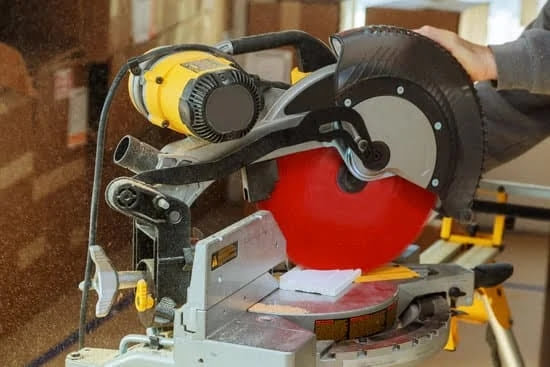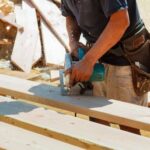Introduction
ASMR stands for Autonomous Sensory Meridian Response, and it is a term used to describe the pleasant tingling sensation that many find when hearing certain sounds. In recent years, Japanese woodworking ASMR has become an increasingly popular genre of ASMR content. But what exactly is Japanese Woodworking ASMR and where did it come from?
Japanese Woodworking ASMR is a type of calming audio entertainment that includes slow, precise sounds such as the sawing of wood, sanding of surfaces, precise hammering, and rasp filing to create smooth surfaces. It often involves traditional Japanese tools like chisels and planes, as well as hand tools like hammers and saws. The carefully crafted sounds can evoke feelings of relaxation and calm as they are generally low-key in nature compared to other types of sounds available in other genres.
The origins of Japanese Woodworking ASMR can be traced back centuries in Japan. From performing delicate tasks during temple building to crafting everyday household items with basic wooden tools, artisans have been making use of the same techniques for creating beautiful pieces for hundreds of years. Today, these same artisanal methods are being replicated for modern day craftsmanship through modern equipment but with much of the traditional technique still present and cherished.
Many people report feeling relaxed after listening to Japanese Woodworking ASMR related content. Not only does this content provide tingles considered pleasurable by some individuals, but also it helps reduce stress levels due to its calming effect thanks to its slow and gentle noises which induce a meditative state allowing listeners to clear their minds while freeing them from daily stresses or anxieties they may be experiencing. Listening to this type of content may even help enhance productivity or focus when needed due to its ability to decrease stress levels which can increase mental clarity if someone is feeling overwhelmed or easily distracted.
Different Techniques Employed in Japanese Woodworking ASMR
Japanese woodworking ASMR combines a variety of techniques to craft unique wood products. Such techniques include using traditional saws and chisels, as well as using hand planes to shape the wood, affect its surface plaining, and create various decorative details. Other techniques employed in Japanese ASMR woodworking include carving detailed sculptures, creating small scale furniture pieces, utilizing joinery to connect parts together, and forming intricate wood joints. The most unique aspect of this type of woodwork is the use of burnishing tools to smooth out the end product ” these are done with various materials such as brass, tungsten-carbide or even diamond files. Finally, rubbing oils and polishes are often used to bring out the natural shine in the final piece.
Japanese Woodworking ASMR and Stress Relief
Japanese woodworking ASMR is an innovative type of audio-visual stress reduction which uses the sound of traditional woodworking tools and techniques to help bring a sense of peace and relaxation to those who practice it. This type of audio-visual experience has gained popularity due to its calming and therapeutic effects, helping people to escape their daily worries and put their minds at ease.
The method utilizes the sound of ancient Japanese furniture-making tools such as saws, hammers, chisels, planes and other instruments along with soft ambient background music in order to create a stunning auditory landscape. The art of Japanese woodworking can be extremely calming, with the sound of these precision tools often managing to capture and convey the beauty found in each action taken as part of this delicate yet versatile craft. As an ASMR experience, these soothing visual and auditory sensations can have powerful effects on the listener’s senses such as reducing stress levels, increasing focus and concentration skills as well as lulling them into relaxation during times when one would otherwise find themselves feeling uneasy.
Moreover, Japanese woodworking ASMR also provides listeners with a glimpse into the intricate process that goes into creating beautiful pieces of furniture from start to finish; this often means taking something raw or unfurnished wood and transforming it into something both artistically exquisite while also timelessly functional. From sculpting tenons by hand with chisels to carefully gluing dowel pins together for increased stability ” one can truly appreciate the skill required for Japanese carpentry work after experiencing it firsthand through ASMR videos. In addition to this, many viewers will note how calming and almost meditative certain aspects of traditional Japanese carpentry become after watching a few minutes worth material in order to create something extraordinary from nothing more than chunks of rough lumber.
Setting Up for Japanese Woodworking ASMR Videos
If you are interested in creating content for Japanese woodworking ASMR videos, there are a few key steps that you must take before setting up the video. First, decide on the size of the piece that you want to make and thoroughly research materials, tools and techniques; if possible, it is best to watch someone else construct your chosen piece before attempting to build it yourself. Once you have decided on which items will be in your tool box and gathered the necessary materials, clear a workspace that is large enough for all of your tools and supplies. Once everything is set up, it is time to start recording! Take your time to explain how each step is completed as an opportunity for viewers to learn and appreciate the craftsmanship behind Japanese woodworking. Finally, don’t forget to layer in various ambient sound effects ” such as background music or woodworking noises like sawing and sanding ” so that viewers feel fully immersed in the process. With these steps complete, you will be well on your way to producing excellent Japanese woodworking ASMR videos!
Demonstrations of Japanese Woodworking ASMR
Japanese woodworking ASMR is a form of audio-visual media in which artisans create traditional Japanese furniture using traditional tools and techniques. This type of ASMR (autonomous sensory meridian response) seeks to provide viewers with a soothing, calming experience through visual and auditory stimulae. The focus of each video is typically the precision and skillfulness of the woodworker as they move their hands along the wood, shaping and polishing it into intricate shapes. The videos may include close up shots of chisels being brought down on wood, saw blades cutting through material, or sanding blocks running across surfaces. Additionally, some videos also feature commentary or tips from experienced artisans that offer insight into different methods or techniques. While this type of media is enjoyable to watch, it’s much more than just an aesthetic experience; it can be incredibly inspirational for amateurs who want to learn how to practice the craft themselves at home. Watching Japanese woodworking demonstrations can teach you not only about how professionals perform their trade but also about techniques for working with the specific types of woods available on the market. Whether you’re looking to make upgrades around your house, build furniture for your outdoor space, or learning new fabrication methods – watching Japanese Woodworking ASMR videos can give you invaluable lessons.
Investing in Japanese Woodworking ASMR Resources
Japanese woodworking ASMR resources may be a great asset to invest in, especially if you are looking to explore traditional craftsmanship and be part of the art of woodworking. With its long-standing tradition, Japanese woodworking practices have been incredibly popular for many centuries. Investing in ASMR resources allows woodworkers to gain access to a unique style and approach that has been passed down and mastered throughout generations.
Some specific resources that potential woodworkers can look into when investing in Japanese woodworking is specialist tools and materials, guidance from expert teachers, research materials on the history, techniques, and aesthetics of traditional craftsmanship techniques, books with step by step instructions for projects such as furniture making and repair, and even guided audio recordings which provide an immersive experience which can really help one understand the detail behind Japanese crafting. These recordings usually feature calming music which is known as ‘ASMR’, or Autonomous Sensory Meridian Response experienced by those listening to certain ambient sounds. Not only does this provide a relaxing atmosphere but it also helps create focus and concentration needed for completing project tasks accurately. Additionally there are many communities for both professional skilled tradesmen and enthusiasts alike with dedicated forums for discussing various topics related to Japanese craftsmanship making it easier for people with shared passions talking about their favourite projects amongst each other.
Conclusion
The practice of Japanese woodworking ASMR offers a multitude of benefits. Beyond its practical uses, it provides a unique experience that is both calming and therapeutic. It relieves stress and allows its practitioners to immerse themselves in the moment, focusing on the beauty of creation as they craft intricate pieces of art. At the same time, this practice also helps strengthen one’s ability to be mindful and appreciate their environment through close observation and understanding of how different elements work together. Furthermore, this experience often provides a sense of unity with nature that can be deeply satisfying and refreshing, promoting an attitude of respectfulness towards the environment while working with it instead of against it. Ultimately, the practice of Japanese woodworking ASMR has something to offer anyone looking for an up close and personal experience with nature that calls forth relaxation, creativity, and inner peace.

Hi everyone! I’m a woodworker and blogger, and this is my woodworking blog. In my blog, I share tips and tricks for woodworkers of all skill levels, as well as project ideas that you can try yourself.





